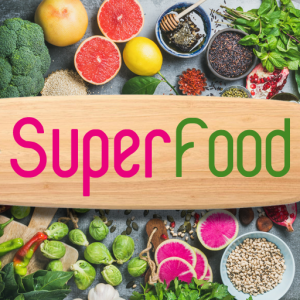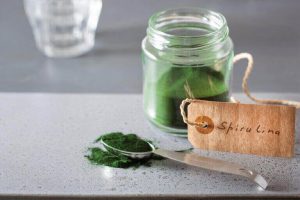Spirulina has been consumed as a food for centuries. Numerous toxicological tests conducted with the financial support of the United Nations have proven its safety. In addition, this product has been commercially produced for the past 30 years and has been consumed by thousands of people without any problems. Recently, two companies in the United States have introduced spirulina as an edible food using scientific guidelines and after approval by the Food and Drug Administration. The results of various studies indicate that spirulina has a good nutritional profile and contains compounds that It has potential health benefits. Over the past 30 years, the production technology of spirulina has also made significant improvements, and while reducing the price, it has also brought an increase in quality. Today, spirulina is commercially produced in different countries of the world. The three main manufacturers of spirulina are located in the United States, China and Thailand. These three companies together produce about 1000 tons of spirulina annually. In addition to the three mentioned countries, spirulina is cultivated in other countries such as Taiwan, Chile, Vietnam, India, Japan, Cuba, Spain, Argentina, Mexico, and to a very limited extent in Iran, where Raya Algab Pars is one of these producers.
Those interested in the production of spirulina algae, which has a very bright future ahead of them, can contact the Raya Algab Pars team and get to know the spirulina algae production line closely.

Spirulina also has various food applications in fruit juices, milk, confectionery products, chocolates, desserts, donuts, biscuits, cakes, cookies, macaroni, salad dressings, frozen desserts, snacks, corn chips, Puffs, crackers, breakfast cereals, liquid or instant foods. Spirulina is also widely used in colored spaghetti, chips and toothpaste. Some foods with attractive and pleasant green and blue colors, which are very attractive for children, contain spirulina.
Therefore, especially in the last century, spirulina has had various commercial uses and applications in various industries, especially in the food industry. Due to its nutrients, rich vitamins and abundant antioxidants and iron element, this microalgae has been very important in the food industry of some countries. Some countries harvest spirulina in abundance in natural waters, such as Myanmar and India, around mountains in other countries
It is cultivated commercially in bulk or in photobioreactors. In food factories, isopyrrolaba is used as flavoring, natural carotenoid pigments and protein phycobili. In the following, various uses of spirulina algae in the food industry are mentioned.

The first use of spirulina is for food use. Native tribes in South America and Africa use spirulina to provide protein. The discussion of using spirulina as a useful substance for human health was raised in the late 1970s.
And in the early 1980s, following controversial requests, extensive studies were conducted on this topic. From the treatment of various cancers to antibiotic and antiviral activities, however, what cannot be ignored is that more than 70% of spirulina supply is used for human consumption, especially therapeutic food. Spirulina is widely used in different countries and has been approved by the Food and Drug Administration in the United States as a healthy food without toxic effects.
Properties of spirulina
Spirulina is known for its high protein, vitamins, essential amino acids and essential fatty acids. 60 to 70% of spirulina dry matter contains protein and is a rich source of vitamins, especially B12, which is usually found in animal tissue and is a precursor of vitamin A, beta-carotene and minerals, especially iron. It contains a small amount of gammalinolenic acid. It also contains other useful plant chemical compounds that are beneficial for health.
The use of spirulina as food
When the algae cells or spirulina filaments are powdered, they can be the basis for various types of food products such as soups, sauces, noodles, snacks, instant drinks and other foods. In the farmlands of Eritrea in the United States, efforts have been made by a commercial company to use spirulina in the form of granola and various types of noodles. Spirulina powder was a main ingredient in orange-flavored wafers and various types of candy, 10% spirulina protein flavorings were added to soybeans or egg-milk powders and were used and exploited.
The blue-green color of spirulina is due to these two pigments: phycocyanin (blue) and chlorophyll (green). These two pigments are combined with another group of pigments called carotenoids (red, orange and yellow). Phycocyanin extracted from spirulina was first marketed in 1980 by a chemical company under the brand name Lina Blue. This substance was mainly used as food coloring, food coloring in ice creams and natural color in cosmetic industries. However, since these pigments were sensitive to light, special care had to be taken in protecting them from dyes.

Among the other ingredients used for spirulina is its use in the redness of the breast and thigh muscles of grilled chickens. The number of chicken breasts increases with the increase of spirulina in the diet. The general relationship between the amount of yolk and zeaxanthin in the breast muscle is usually very significant and clear. Therefore, it is quite evident that spirulina in the diet affects the yellowness and redness of the roasted muscle, and the increase in yellowness with some spirulina in the diet may be seen in the normal yellow pigment related to the accumulation of zeaxanthin in the muscle.

The market of microalgae, especially spirulina, for food includes adding them to pasta, biscuits, bread, snacks, chewing gum, yogurt, drinks, etc., for natural pigments, which are very practical and becoming widespread. With the expansion of studies and research projects that are being carried out at the world level, especially about spirulina algae, it is hoped that soon this unique algae will be used in various industries of our country and its mass production will be done at a low cost.
Those interested in the production of spirulina algae can contact us.










